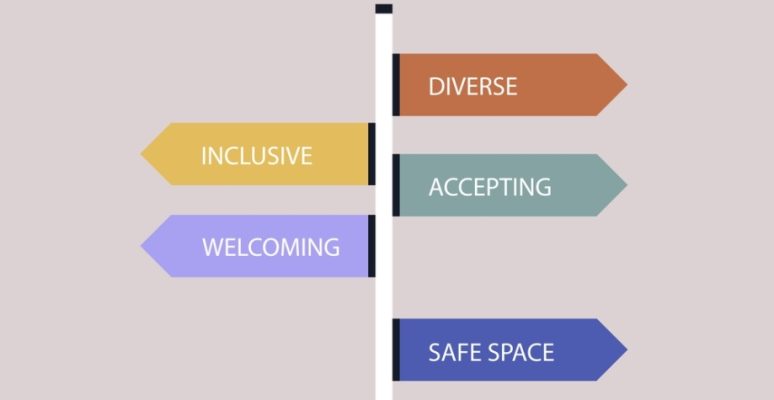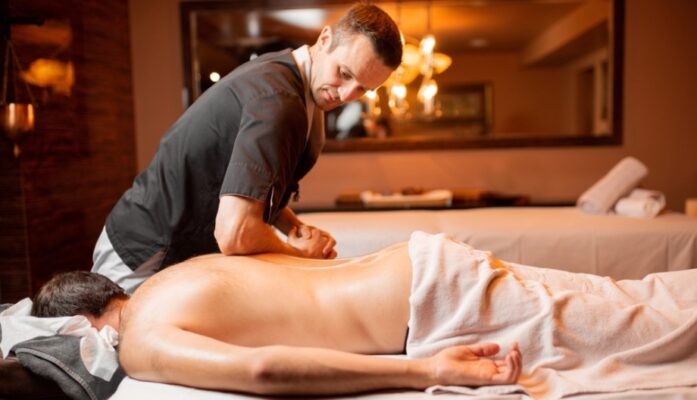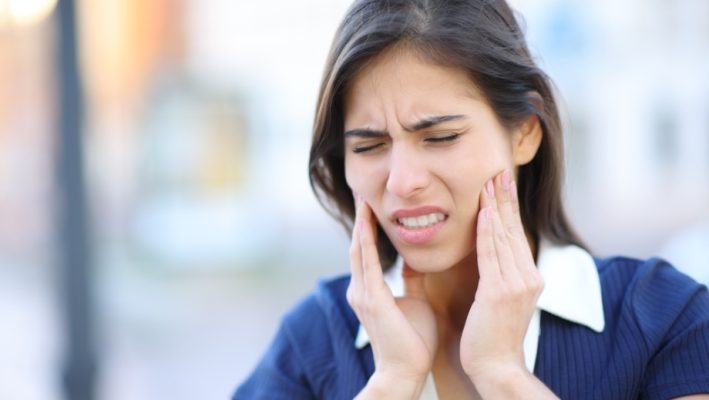
Intra-Oral Massage, also written Intraoral Massage, is a therapeutic massage modality that’s most specifically aimed at alleviating or curing TMJ Dysfunction, although people also undergo the treatment for reduction of facial and neck tensions, improvement of facial tone, reduction of wrinkles and folds, and improvement of overall skin complexion. Intra-Oral Massage is also known as Intra-Oral Buccal Massage or Buccal Massage.

An Intra-Oral Massage is performed both in the inside of the mouth (TMJ, cheeks, palate, gums, throat) to assess, access, massage, and release the areas internally around the TMJ (the therapist will wear thin surgical gloves when working on the inside of the mouth) and on the outside in order to massage and stretch the external scalp, facial, jaw, shoulder and neck muscles and fascia, and to release trigger points.
A TMJ Disorder (or TMJ Dysfunction) is a dysfunction of the temporomandibular joints (TMJ), which are the two joints that connect the lower jaw to the skull. A dysfunction of the TMJ may cause a variety of health issues, such as teeth, facial, neck or jaw pain and sensitivity, limited mobility of the jaw, TMJ clicking or popping, earaches, headaches and migraines, muscle spasms in the head, jaw, neck and shoulders, facial swellings, dizziness, nausea, tinnitus, difficulties with swallowing, postural issues, and/or grinding of the TMJ joints or the teeth.
The most common causes attributed to TMJ Dysfunction are whiplash, bruxism (grinding, clenching, or gnashing the teeth when awake or asleep), oral surgery, anxiety and stress, emotional trauma, trigger point development, and postural dysfunction.

On an emotional level the jaw plays an important role. That is, when people experience stress, anxiety or anger, or if they’re not able to speak out the truth or express themselves authentically, it’s very common that they would clench their jaw or grind their teeth; if this becomes a structural issue in their lives, it can eventually cause the muscles and fascia in the area to tighten up and/or develop trigger points.
Jaw tensions, jaw and facial holding patterns, and jaw disorders are heavily associated with repressed and suppressed emotions and subsequent trauma. The psychoanalyst Wilhelm Reich — the creator of modern Body De-Armoring and Body-Oriented Psychotherapy — already put special focus on actively releasing the muscular armor of the jaw and facial muscles and fascia with rather tough massage, pressure, and acupressure techniques.
Muscular or emotional armoring of the jaw shows many of the same symptoms that are associated with TMJ Dysfunction. As it is, within Body-Oriented Psychotherapy (Somatic Psychotherapy) TMJ Dysfunction is considered one of the symptoms of an emotionally armored jaw or face.

Although jaw armoring can happen to anyone, we see that particular groups of people are more prone to develop this affliction, such as those who have been victims of child or sexual abuse, or individuals of the LGBTQ+ community. Typical of these cases is that people were or still are not able “to speak out,” “come out,” or express themselves or talk about their issues which resulted/results in internalized emotional tension and trauma that materializes itself physically in a rigid (and often simultaneously sensitive or even numb) facial, jaw, neck, and shoulder structure.
Physical Dearmoring techniques for the jaw (which are applied for emotional and trauma release) usually include massaging the jaw and cheeks (which may be in the form of an Intra-Oral Massage), breathwork, applying acupressure on the jaw muscles and joints, making movements or doing exercises with the jaw and mouth to mobilize the jaw, facial stretches, or making sounds that widely open the mouth.
At any rate, although not necessarily a painful treatment, an Intra-Oral Massage session is generally rather intense, sensitive, and somewhat invasive because the affected muscular and myofascial areas of the jaw, mouth, face, and head have often been neglected for a very long time. Trigger point release may also be somewhat intense with short sharp moments of pain during the treatment, but overall people will almost immediately afterwards experience relief of their symptoms.
Typically, an Intra-Oral Massage session will take about sixty minutes. Depending on the results it may be repeated on another moment in time.




















